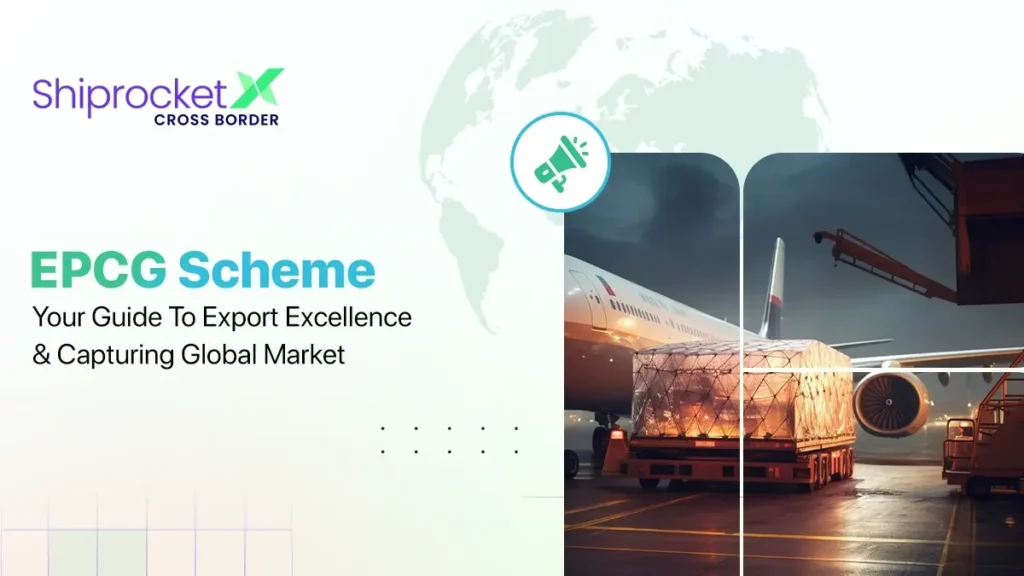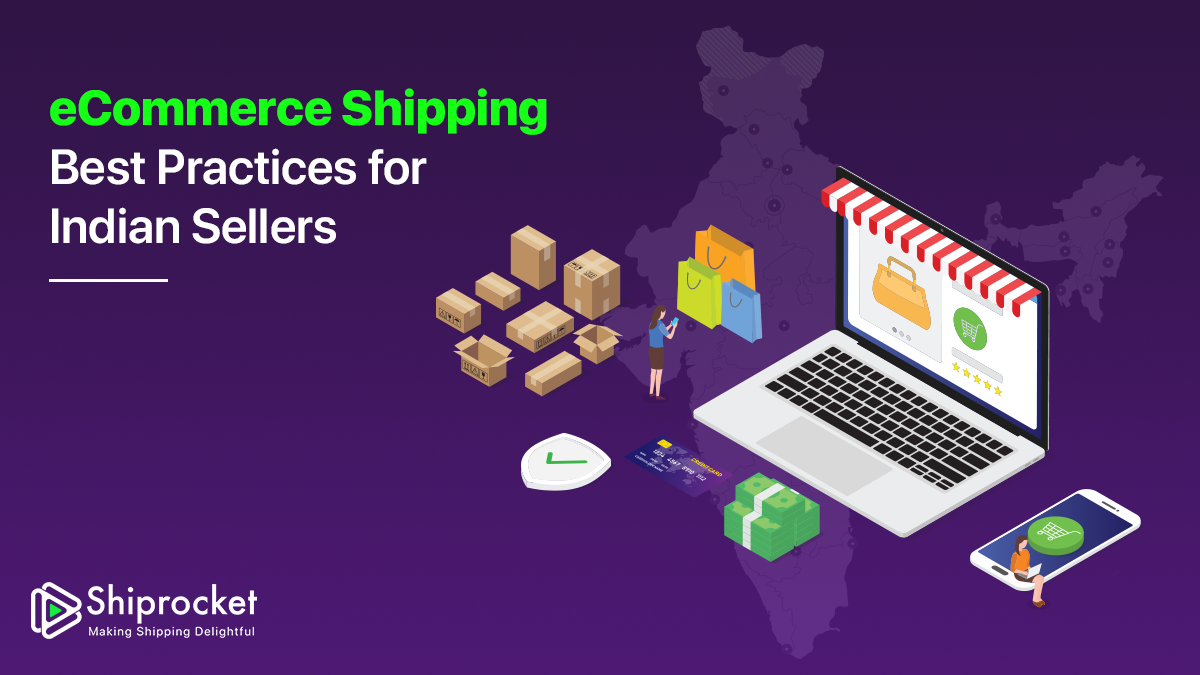EPCG Scheme: Eligibility, Registration Process & Benefits
- What is the Export Promotion Capital Goods (EPCG) Scheme?
- Eligibility Criteria and Documentation Requirements
- Capital Goods Eligible for Import under the EPCG Scheme
- Analysis of Government Incentives and Benefits
- How to Register for EPCG?
- Benefits of Participating in the Export Promotion Capital Goods Scheme
- Conclusion
Special schemes and simplification of trade regulations are necessary to enable Indian businesses to export their goods to international markets. This will strengthen the economy and foster strong bonds with other nations. The government of India has recognised the potential and challenges in export activities and has taken the right call. The country has introduced the EPCG scheme to elevate the country’s trade potential. An EPCG licence provides exporters with a financial waiver by reducing import fees.
This blog details everything there is to know regarding government initiatives to strengthen and make exporting easier. It gives the readers a roadmap for businesses to maximise the benefits of these initiatives while also giving them an edge over their competitors in the international markets.

What is the Export Promotion Capital Goods (EPCG) Scheme?
The EPCG Scheme is a government initiative that is specifically designed to promote export rates and give incentives and financial assistance to exporters. It provides several benefits to businesses that are engaged in the export sector.
The registration process for the EPCG License with the customs authority includes several steps. The exporter needs to apply to the Directorate General of Foreign Trade (DGFT) with the necessary documents. Upon approval, the exporter can import goods without actually paying the duty. However, this is subjected to fulfilling different export obligations within a specific timeframe.
EPCG is a promotion scheme extremely crucial in the country’s export sector and it aims to eliminate the challenges of infrastructure, minimise transportation costs, and foster a good exporting environment. It is led by the Ministry of Commerce and Industry of India and is strongly tailored to cater to a wide range of industries. It aims at diversification and increased competitiveness in the global arena.
Eligibility Criteria and Documentation Requirements
To register for the EPCG Scheme, you must meet the eligibility criteria given below.
- You must be a manufacturer, exporter, or merchant exporter that is associated with a supporting manufacturer.
- You should hold a valid Import Export Code (IEC) provided by the Director General of Foreign Trade (DGFT).
- You should not be present on the Negative List of Exporters and the caution list of the RBI (Reserve Bank of India).
- You must have a turnover of Rs. 1 crore in the previous year through exports.
- You must have a minimum remaining export obligation equivalent to the duty levied on capital goods imported under this scheme.
The documents needed to register for the EPCG Scheme include the following:
- DGFT Digital Signature and Import Export Code (IEC Code)
- Registration-cum-membership Certificate (RCMV) and GST certification (if applicable)
- Udyog Aadhar/SSI/MSME/IEM/ Industrial License
- Purchase order
- ANF-5A (Application) and Fee for the official government application
- Duty saved amount statement
- Necessary Declarations
- Appendix 5A and Appendix 5B
Capital Goods Eligible for Import under the EPCG Scheme
Physical assets that a business uses to produce or manufacture products and services that can be used later are termed capital goods. These include buildings, equipment, machinery, tools, and vehicles. Capital goods are not completed goods. They are used to make finished goods. Capital goods include the following:
- Buildings
- Machines
- Equipment
- Vehicles
- Tools
This sector has a multiplier effect and is bearing on the development of the user industries as it is the source of their input. Under the EPCG Scheme, manufacturers can import capital goods for pre-production and post-production of goods without the duty levied on them.
The ability to avoid the payment of duties on the import of capital goods is subjected to the fulfillment of export value to more than six times of duty saved on the import of capital goods. It must occur within six years from the issuance date of authorisation.
Analysis of Government Incentives and Benefits
The key export promotion schemes and their distinct features with their benefits are listed below:
- Remission of Duties and Taxes on Exported products (RoDTEP) and Merchandise Exports from India Scheme (MEIS): The MEIS Scheme was mainly designed to offset the ill effects of the trade conditions globally and also promote the exporting of goods giving duty credit scrip to exporters. It was later replaced by the RoDTEP Scheme. The reimbursement of taxes and duties, fuel transportation, etc., can be availed through this scheme.
- Service Exports from India Scheme (SEIS): This scheme gives exporters of services incentives and rewards to neutralise infrastructural inefficiencies and minimise the costs of service provision. They also give duty credit to encourage service providers to earn foreign exchange thus enhancing the export services sector of the country. It is pivotal for the healthcare, hospitality, and IT sectors.
- Advance Authorisation Scheme: Duty-free import of raw materials used in export manufacturing is enabled through this scheme. It also minimises the cost of production and manufacturing. It is most suited for industries where all the costs constitute a large portion of the finished product thus enhancing the competitiveness of Indian exports.
- Export Credit Guarantee Corporation (ECGC): A crucial role in reducing the export payment risk is through the ECGC Scheme. This scheme offers credit insurance solutions. It helps in the protection of the exporters against losses from non-payment by the importers. It enables smoother financial operations by enabling businesses to explore new markets with confidence.
- Export Promotion Capital Goods Scheme (EPCG): This scheme facilitates the importing of goods at no duty upon fulfilling certain obligations. The scheme is designed to modernise India’s export production capabilities by encouraging the adoption of modern equipment and machinery. Hence, the quality and efficiency of the export goods are enhanced.
How to Register for EPCG?
You must follow the steps listed below to register for the EPCG License:
- Register with the DGFT or log in to your account
- Choose the “Services” tab
- Click on “Online e-com Application”
- Select EPCG
- Add in the relevant details and upload the supporting documents
- Submit the application
Your license will be issued in 3 days by the DGFT after approval.
Benefits of Participating in the Export Promotion Capital Goods Scheme
The EPCG Scheme can be beneficial in the following ways:
- The EPCG Scheme provides duty-free imports of products when certain export obligations are met.
- The EPCG license offers great financial assistance to exporters by eliminating import charges.
- It enables fast-track enterprises to promote exports.
- Upon obtaining an EPCG license, they must register it at the port of entry to be permitted duty waivers while submitting the Bill of Entry.
- When exporters have shipments under Rs.1 crore, compliance will be needed through a bond guarantee. Through the EPCG, customs will give a bond to the exporters without a bank guarantee.
Conclusion
The EPCG Scheme plays a pivotal role in the promotion of exports and also in supporting businesses engaged in international trade. Through offering duty-free imports and financial incentives, the EPCG Scheme will contribute to the growth of the country’s economy. Understanding the obligations of export can help you gain an EPCG license outlined in this scheme. The EPCG scheme is spearheaded by the Ministry of Commerce and Industry, this scheme is customised to enhance a wide range of sectors for exports.





